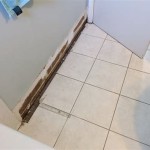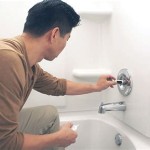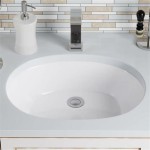How to Finish Bathroom Countertops
Bathroom countertops are a focal point of the space, influencing both the aesthetic and functionality of the room. The finishing touches applied to these surfaces significantly impact their durability, hygiene, and aesthetic appeal. While various countertop materials exist, this article will focus on the essential steps for finishing common bathroom countertop materials, such as natural stone, engineered stone, and laminate.
1. Preparation and Cleaning
Before any finishing is applied, the countertop surface must be thoroughly prepared. This involves cleaning the surface to remove any dust, debris, or existing sealant. For natural stone countertops, a specialized stone cleaner is recommended. Engineered stone may be cleaned with mild soap and water, while laminate surfaces can be cleaned with a general-purpose cleaner.
Once cleaned, the countertop should be allowed to dry completely. Any imperfections, scratches, or chips should be addressed before proceeding with finishing. For natural stone, a poultice can be used to fill minor scratches and chips. Engineered stone and laminate surfaces may require sanding and patching to repair imperfections.
2. Sealing and Protection
Sealing is crucial for protecting bathroom countertops from water damage, stains, and other forms of wear and tear. The type of sealant needed depends on the countertop material. Natural stone, such as granite and marble, requires a penetrating sealer. These sealants create a barrier within the stone's pores, preventing liquids from soaking in and causing stains.
Engineered stone, on the other hand, typically has a factory-applied sealant. However, it may benefit from an additional layer of sealant to enhance its protection over time. Laminate countertops are usually coated with a protective layer during manufacturing and might not require additional sealing.
When applying any type of sealant, it is important to follow the manufacturer's instructions carefully. This includes the application method, drying time, and number of coats required. The sealant should be applied evenly to the entire surface in thin coats, ensuring that all areas are covered. Allow the sealant to dry completely before using the countertop.
3. Polishing and Refinishing
Polishing and refinishing are often necessary to restore the shine and luster of bathroom countertops. These processes can also help to remove minor scratches and imperfections. For natural stone countertops, a professional stone polisher is recommended. The process typically involves using a series of diamond pads to refine the surface, followed by a polishing compound to achieve a high gloss finish.
Engineered stone may be polished with a specialized product designed for artificial stone surfaces. Laminate countertops can be refinished with a specialized laminate polish or a general-purpose polish. However, it is crucial to choose a polish that is compatible with the type of laminate used.
When polishing or refinishing countertops, it is essential to work in a well-ventilated area and wear appropriate safety gear, such as gloves, eye protection, and a respirator. Follow the manufacturer's instructions carefully and apply the polish in thin layers using a clean cloth or applicator pad.

Paint Bathroom Vanity Countertop Sink So Easy A Piece Of Rainbow

How To Finish A Wood Bathroom Countertop And Vanity South House Designs

How To Finish A Wood Bathroom Countertop And Vanity South House Designs
:strip_icc()/102090522-84a93b00dada4cacae91bcc78b5211c8.jpg?strip=all)
18 Luxurious Bathroom Countertop Ideas For All Budgets

From Start To Finish Understanding The Bathroom Countertop Installation Process Denver Stone Plus

How To Remodel A Bathroom Paint Vanity

Tasha Designer Trapped Diy Concrete Countertop Feather Finish Bathroom Vanity With Integ Countertops

How To Finish A Wood Bathroom Countertop And Vanity South House Designs

A Guide To Materials And Finishes For Bathroom Design Cafe

Feather Finish Over Sink I Did It Hometalk
Related Posts







